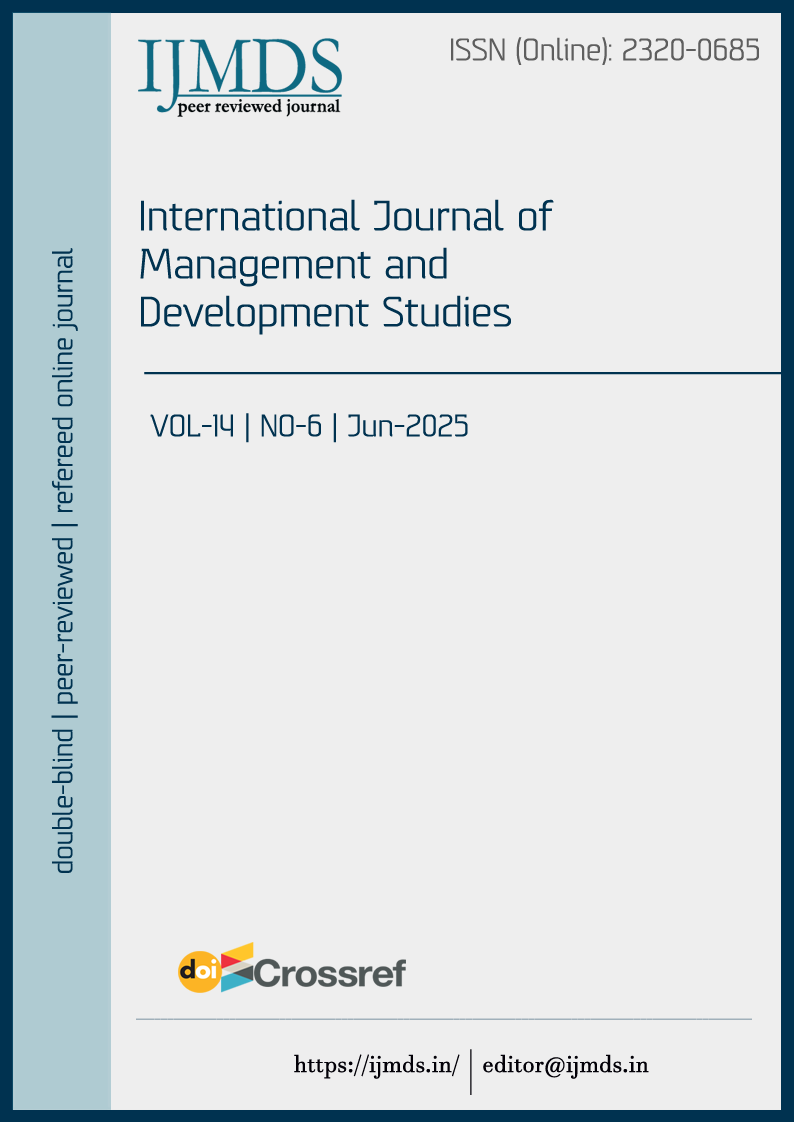Effectiveness of Environmental Management and Technical Challenges in Achieving Sustainable Marble Mining in Rajsamand District
DOI:
https://doi.org/10.53983/ijmds.v14n6.009Keywords:
Marble Mining, Management Practices, Environmental DegradationAbstract
The purpose of this study is to analyse the current practices concerning environmental management in marble mining projects in Rajsamand District to evaluate their impacts and the technical problems preventing these practices from being considered as sustainably achievable. With the purpose of providing structured objectives alongside hypothesis-driven research, the study aimed at finding how well ecological concerns were integrated into practices and identifying the most important technical constraints affecting the practices’ success. To achieve the aims of the research, statistical methods of cross tabulation, ANOVA test, chi-square test and regression analysis were utilized to examine the association of effective environmental management and technical constraints on environmental management. The results of this study strongly confirmed the hypotheses with the observation of the null hypotheses being rejected, which verified that the provided environmental measures greatly affected the sustainability outcomes despite the technical limitations, pointing toward the greater linkage of constructs. With these results, the study claimed that policies and other strategic actions should be undertaken in order to address the gap that exists towards promoting sustainable mining in the region.
Downloads
References
Anderson, B., Berry, D., & Shields, D. (2019). Sustainable development and its influence on mining operations on federal lands: A conversation in plain language. United States, 1–4.
Bôas, R. C. V., Shields, D. J., Snølar, S. V., Anciaux, P., & Önal, G. (2005). A review on indicators of sustainability for the minerals extraction industries. In CYTED-CETEM (pp. 110–185).
Franks, D. M., Brereton, D., & Moran, C. J. (2010). Managing the cumulative impacts of coal mining on regional communities and environments in Australia. Impact Assessment and Project Appraisal, 28(4), 299–312.
International Union for Conservation of Nature (IUCN), & United Nations Environment Programme (UNEP). (1980). The world conservation strategy. Switzerland, 5–10.
International Organization for Standardization. (1999). ISO 14301: Environmental performance evaluation—Guideline and general principles. Geneva, Switzerland: ISO. (pp. 270–290).
Jain, R., Cui, Z. C., & Domen, J. K. (2016). Environmental impact of mining and mineral processing. Elsevier, Butterworth-Heinemann. (pp. 322–325).
Jawahir, I. S., & Dillon, O. W., Jr. (2007). Sustainable manufacturing processes: New challenges for developing predictive models and optimization techniques. In Proceedings of the First International Conference on Sustainable Manufacturing, Montreal, Canada (pp. 1–19).
Le, T., & Le Van, C. (2018). Research and development and sustainable growth over alternative types of natural resources. Economic Modelling, 70, 215–229.
Mudroch, A., Stottmeister, U., Kennedy, C., & Klapper, H. (2002). Remediation of abandoned surface coal mining sites. Springer. (pp. 175–176).
McCullough, C. D., & Lund, M. A. (2006). Opportunities for sustainable mining pit lakes in Australia. Mine Water and the Environment, 25(4), 220–226.
Rajaram, V., Dutta, S., & Parameswaran, K. (Eds.). (2005). Sustainable mining practices: A global perspective. CRC Press. (pp. 190–224).
Reuter, M., Hudson, C., Van Schaik, A., Heiskanen, K., Meskers, C., & Hagelüken, C. (2013). Metal recycling: Opportunities, limits, infrastructure. A report of the working group on the global metal flows to the International Resource Panel. (pp. 41–68).

